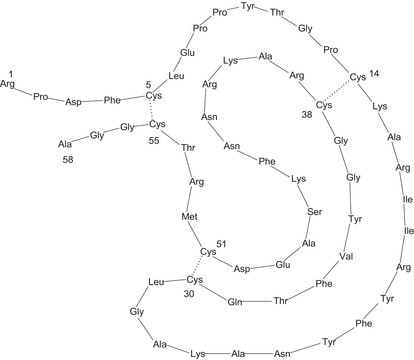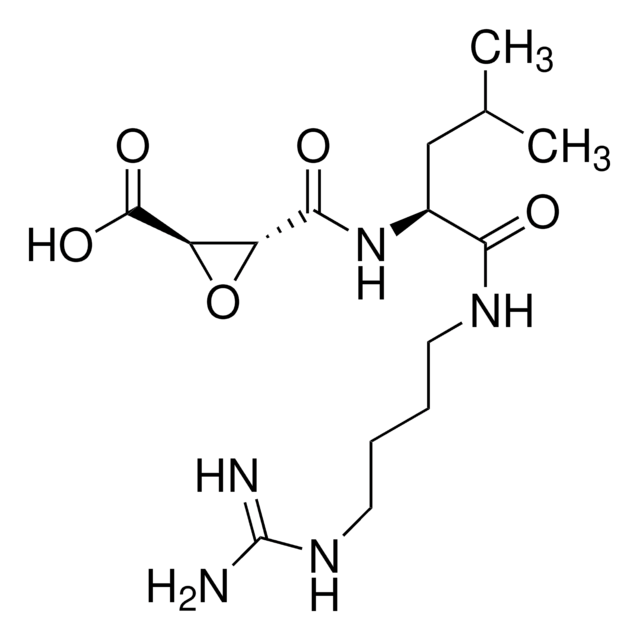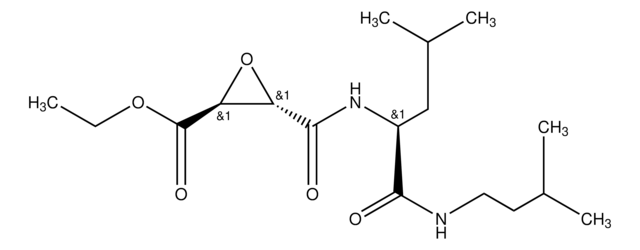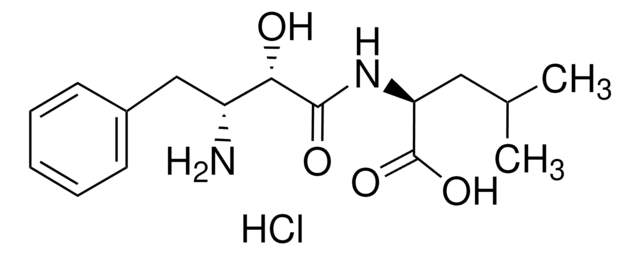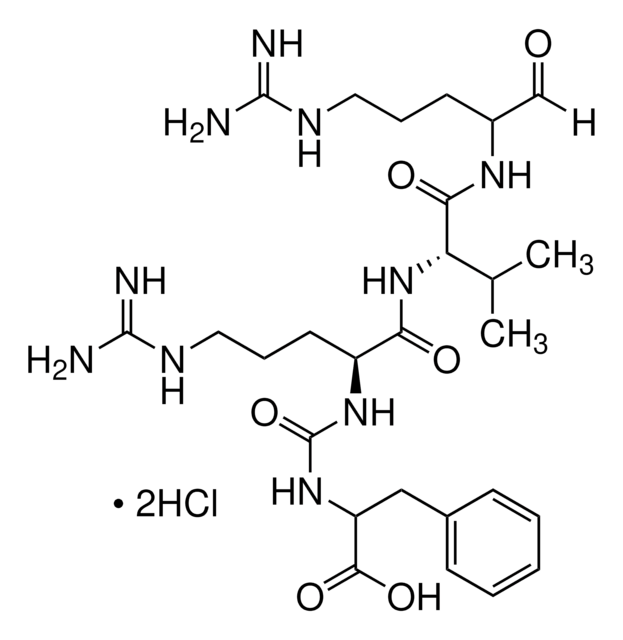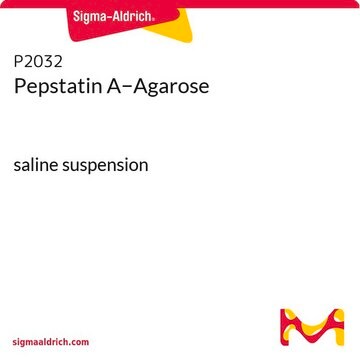Kluczowe dokumenty
About This Item
Polecane produkty
Nazwa produktu
Pepstatin A, microbial, ≥90% (HPLC)
pochodzenie biologiczne
microbial
Poziom jakości
Próba
≥90% (HPLC)
Formularz
powder
mp
233 °C (dec.) (lit.)
rozpuszczalność
ethanol: 1-2 mg/mL (with heat up to 60 °C)
temp. przechowywania
2-8°C
ciąg SMILES
CC(C)C[C@H](NC(=O)[C@H](C)NC(=O)C[C@H](O)[C@H](CC(C)C)NC(=O)[C@@H](NC(=O)[C@@H](NC(=O)CC(C)C)C(C)C)C(C)C)[C@@H](O)CC(O)=O
InChI
1S/C34H63N5O9/c1-17(2)12-23(37-33(47)31(21(9)10)39-34(48)30(20(7)8)38-27(42)14-19(5)6)25(40)15-28(43)35-22(11)32(46)36-24(13-18(3)4)26(41)16-29(44)45/h17-26,30-31,40-41H,12-16H2,1-11H3,(H,35,43)(H,36,46)(H,37,47)(H,38,42)(H,39,48)(H,44,45)/t22-,23-,24-,25-,26-,30-,31-/m0/s1
Klucz InChI
FAXGPCHRFPCXOO-LXTPJMTPSA-N
Szukasz podobnych produktów? Odwiedź Przewodnik dotyczący porównywania produktów
Opis ogólny
Zastosowanie
Działania biochem./fizjol.
Uwaga dotycząca przygotowania
Stock solutions at 1 mg/ml are stable at least a week at 4 °C. A 1 mM solution in methanol or DMSO is stable for months at -20 °C. If solutions become darker yellow, the reagent is hydrolyzing.
A working concentration of 1 μM is stable for at least one day at room temperature.
Kod klasy składowania
11 - Combustible Solids
Klasa zagrożenia wodnego (WGK)
WGK 2
Temperatura zapłonu (°F)
Not applicable
Temperatura zapłonu (°C)
Not applicable
Środki ochrony indywidualnej
Eyeshields, Gloves, type N95 (US)
Wybierz jedną z najnowszych wersji:
Masz już ten produkt?
Dokumenty związane z niedawno zakupionymi produktami zostały zamieszczone w Bibliotece dokumentów.
Klienci oglądali również te produkty
Nasz zespół naukowców ma doświadczenie we wszystkich obszarach badań, w tym w naukach przyrodniczych, materiałoznawstwie, syntezie chemicznej, chromatografii, analityce i wielu innych dziedzinach.
Skontaktuj się z zespołem ds. pomocy technicznej
